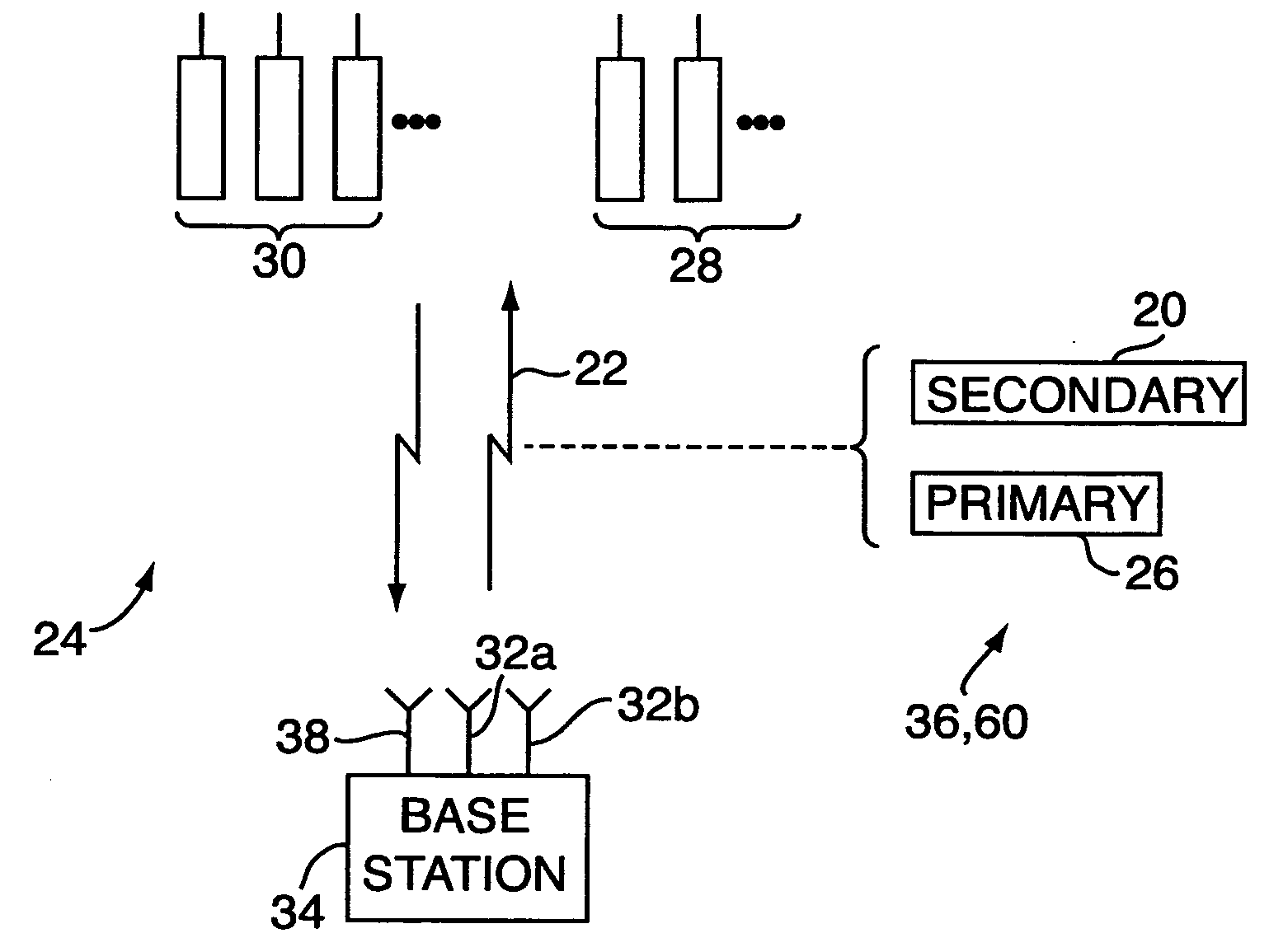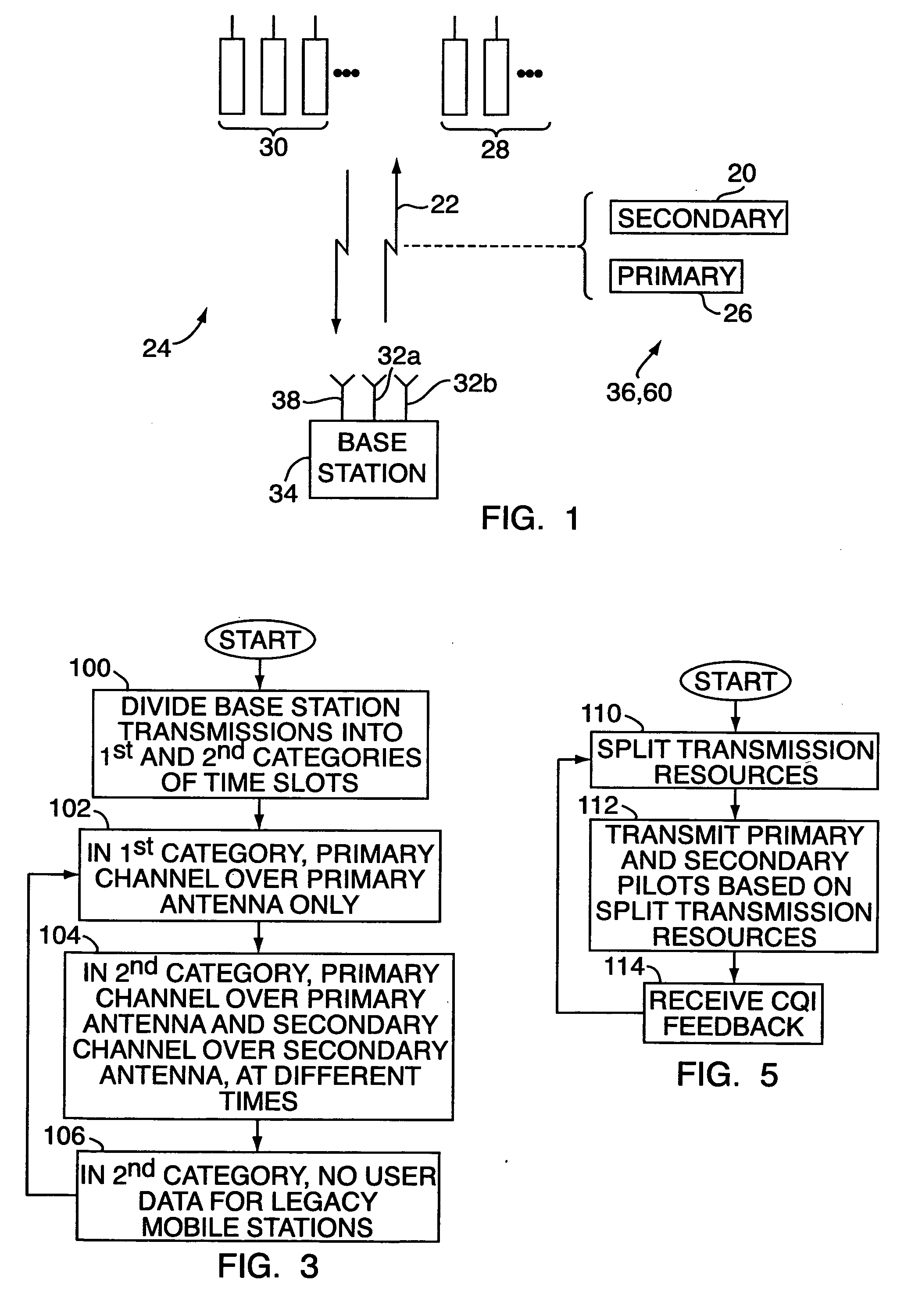Method for enabling use of secondary pilot signals across a forward link of a CDMA network employing a slotted transmission scheme and time multiplexed pilot channel
a pilot channel and forward link technology, applied in the field of telecommunications, can solve problems such as backward compatibility, unfavorable forward link performance, and unsatisfactory operation of existing mobile stations, and achieve the effect of improving forward link performan
- Summary
- Abstract
- Description
- Claims
- Application Information
AI Technical Summary
Benefits of technology
Problems solved by technology
Method used
Image
Examples
Embodiment Construction
[0024] With reference to FIGS. 1-3, an embodiment of the present invention relates to a method and system for enabling the transmission of one or more secondary pilot signals 20 on the forward link 22 of a CDMA network 24 that employs a slotted transmission scheme with a time-multiplexed primary pilot signal 26. The method is backwards compatible in a “strict” sense, meaning that for existing, “legacy” mobile stations 28, the system remains unchanged; this allows service providers to add on new services incrementally, according to demand. However, for “new” or “secondary” mobile stations 30, the transmission of the secondary pilot signal(s) 20 from one or more secondary antennas 32a, 32bwill allow the base station 34, aided by measurements and reports from the mobile stations 28, 30, to transmit via multiple antennas / beams, thus improving overall system performance.
[0025] The transmission of secondary pilot signals 20 on the slotted transmission scheme CDMA network 24, using the se...
PUM
 Login to View More
Login to View More Abstract
Description
Claims
Application Information
 Login to View More
Login to View More - R&D
- Intellectual Property
- Life Sciences
- Materials
- Tech Scout
- Unparalleled Data Quality
- Higher Quality Content
- 60% Fewer Hallucinations
Browse by: Latest US Patents, China's latest patents, Technical Efficacy Thesaurus, Application Domain, Technology Topic, Popular Technical Reports.
© 2025 PatSnap. All rights reserved.Legal|Privacy policy|Modern Slavery Act Transparency Statement|Sitemap|About US| Contact US: help@patsnap.com



